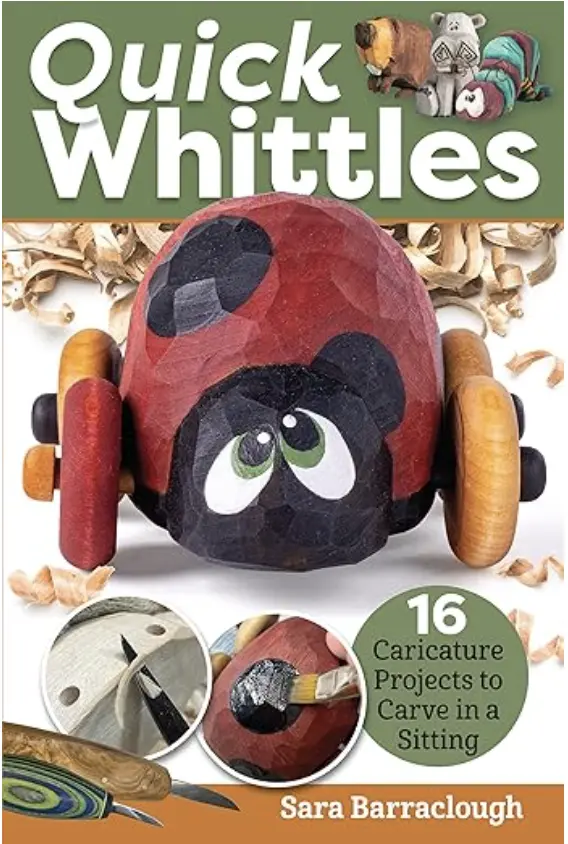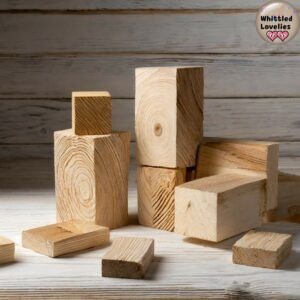7 Woodcarving Projects I Copied Step-by-Step – And What I Truly Learned
Published on: April 16, 2025
Reading time: 8 minutes
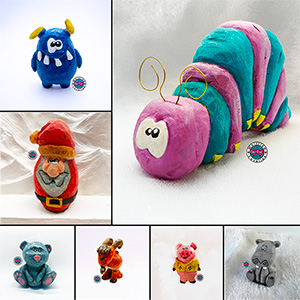
Hey everyone! Today I’m bringing you along on a personal challenge I set for myself a little while ago—one that really made me think. I followed step by step 7 woodcarving projects, and each one of them taught me something valuable—even when things didn’t go as planned.
But wait… is doing a challenge even worth it?
According to some news stories, “challenges” have earned a pretty bad rep: absurd, dangerous, or just plain useless stunts. But like everything, challenges have two sides. And it all depends on what they actually are and how we approach them.
The challenge I started didn’t come from anyone else. I threw it at myself. And maybe that’s the first good sign: a challenge against yourself. Not an obsessive one, but something that motivates you and tests your skills—even your ability to handle stress!
I was in one of those phases where I had time to carve, but no brilliant ideas, no project on the horizon. The classic creative lull. While I was organizing my archive of projects, ideas, videos, and books, I stopped at one of my all-time favorites: Quick Whittles of Sara Barraclough.
This book is more than a guide. It’s a collection of experiences, tips, technical details, photos, and insights. I went through it thoroughly, and there it was—the spark! Why not challenge myself and do something I’ve never done before: follow this amazing woodcarver’s directions to the letter?

How to Use Printable Patterns for Woodcarving
A really handy addition in the book is the set of printable cutout templates, designed to go with each project. Some of them even show two views (front and profile), which is super helpful during the roughing stage—especially to keep proportions right from the start. They’re incredibly useful, especially if you’re using a bandsaw.
That said, if you’re a beginner, they might be a bit confusing at first: the book doesn’t really explain how to use them or show the process in detail.
So I decided to include a short video below ⬇️ (taken from another project) where I explain in a quick and easy way how to use these templates. Feel free to print the pattern and stick it directly onto your wood block if you want to skip the hand drawing, like I did in this video!
The Challenge Rules
I only had a few simple rules:
- One project at a time. No skipping ahead.
- Finish the piece completely (including painting) before starting the next.
- Follow the book’s instructions step by step, with no improvising.
To make it more exciting—but still fun, not stressful—I picked 7 subjects from the book and gave myself 10 days to complete them. And I did it! I copied everything. And in doing so, I learned way more than I expected!
I couldn’t wait to get my hands on the wood again, feel the knife working through the fibers, so I dove right in. And now I’ll walk you through each project and how it went!
Disclaimer:
For each project, I will show two images: one created by me and one labeled as the “original,” taken from the book Quick Whittles. All rights to the latter image are reserved by Fox Chapel Publishing and the author Sara Barraclough.
1
Mountain Goat
I don’t know exactly what drew me to this subject, but I loved it right away! Maybe it’s the peaceful yet cheeky expression, maybe the little beard… who knows, but she had to be my first!
The first big challenge was sticking to the rules: reading the instructions, looking at the photo, and doing exactly what the book said. So hard! I’ve been carving from my own imagination for years. When I follow someone else’s subject, I usually just glance at the final piece and do it my way.
But this time, I really wanted to learn and discover something new—not stay in my comfort zone. At times I slipped and made tiny changes, mostly out of fear of ruining the piece at the last minute, or because it’s just so hard not to fall back on old habits.
Still, it came out great and I’m very happy with it. I even followed the coloring instructions—well, I didn’t have the exact shades, but I did my best to match them. Et voilà!
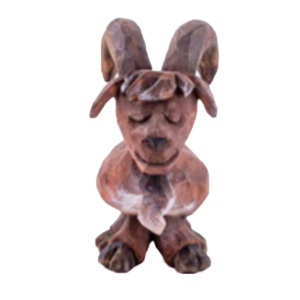
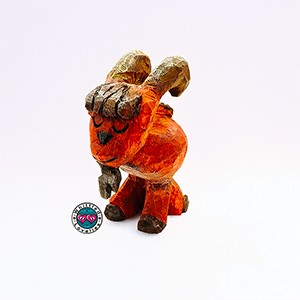
2.
Stylish Piggy
While I was working through the challenge, I started getting new ideas—so here’s another great thing that comes from a creative challenge!
This stylish little piggy didn’t give me much trouble. I was getting into the groove, letting the instructions guide me instead of relying on my habits.
And here’s what I confirmed: wood choice matters.
I carved the piggy from a branch of basswood. Even though I stubbornly keep using them 🤦🏻♀️, this challenge made me start recommending against it in my articles. If you don’t compare it directly with better wood, you might not realize how disappointing the results can be.
I used to blame the knife, the sharpening, the technique—but now I clearly see how much the wood itself matters.
Both pieces were carved in basswood, but the block version was aged and carefully selected for carving. The branch… not so much. The core was too young, the fibers mashed together, and the cuts were messy.
I also played around with the finish here, just to test. Using the same subject helps see what works best. No surprise—the author was right to leave it unfinished. It looks more natural and charming, even if it fades faster. Goodbye satin finish! (at least for this kind of project!😉)

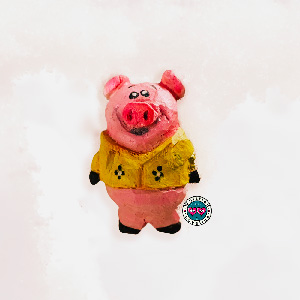
3.
A Rather Moody Caterpillar
To test the wood theory even more, I picked one of my best carving blocks for this one (yes, even among good ones, there are big differences—and the price often reflects that… sigh 😔).
By now, I was getting used to the method, putting my usual habits aside, and the piece just flowed! I finished it quickly, and yes—the cuts were way cleaner.
The big takeaway here? Even if you follow every instruction to the letter, your personal style still shows through. Especially in the eyes: where she is confident, I hesitate. The result is still nice, but hers… hers are something else. Maybe I love her subjects so much because they match everything I enjoy—cartoon style, color, humor. But she always gives them a special, unique expression I haven’t mastered yet.
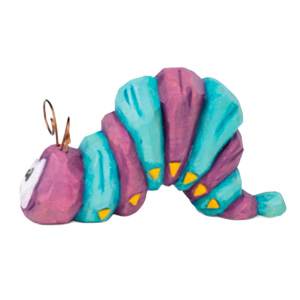

4.
Roly-Poly Santa
This might be my most accurate replica. Smooth and straightforward, it really does look like the original. But hers has the spark of something born that way, while mine shows the effort of copying.
That might sound like a flaw—and it is, for someone like me who’s painfully picky and critical about everything I do. But after talking to many fellow carvers, I felt comforted. I realized something important: copying just isn’t for me.
When I wrote that article about the Austrian carving school, Stephan (one of the owners) explained that it was designed to train Schnitzmeister—highly skilled carvers who could faithfully reproduce any original piece. A real art form.
That’s when I knew—it’s not my path. I even hate carving my own designs twice! So I feel more at home in the whimsical world of the Holzbildhauer, the ones who create original characters. Mystery solved!
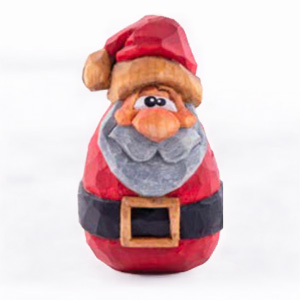
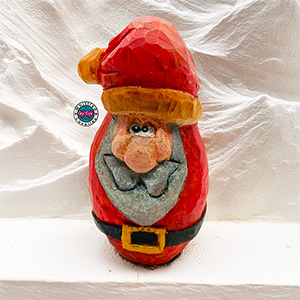
5.
Happy Hippo
Here comes my natural tendency to veer off course. This character has a classic, familiar pose. I was getting too comfy with the method and lost some focus, going back to doing things “my way“.
The nose details were tricky. And the super fun mismatched eyes—one bigger than the other, a signature touch of the author—always throw me off a bit. But I finished it!
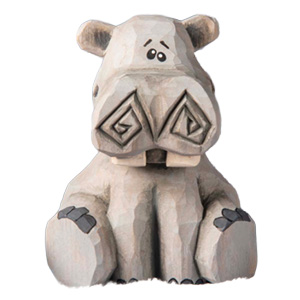
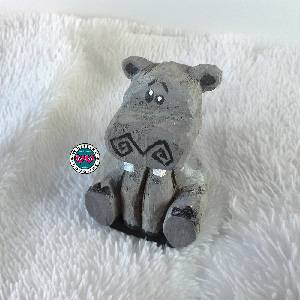
6.
Clyde the Cuddly Bear
This one looks the least like the original. I couldn’t capture the “plush bear” vibe. On its own, it’s cute—but side by side, they barely look related. The expressions are totally different!
I wasn’t able to soften the joints, especially between the head and body. I didn’t dare remove too much wood. I stayed in my comfort zone.
Mistake? Yes—if the goal was to fully dive into someone else’s creative world. But it’s never a mistake to try. And he’s still here, sweet as ever!
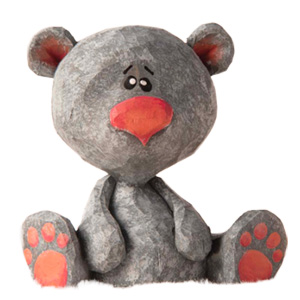
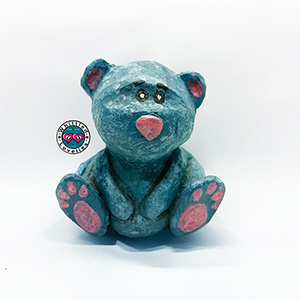
7.
Not-So-Scary Monster

The final piece of the challenge. I saved this one for last on purpose—after the goat, he’s my absolute favorite. I wanted to end on a high note!
What I love about him is the expression and the seemingly simple execution. Let’s see how it went together!
What This Woodcarving Challenge Really Taught Me
So, is copying stealing? Nope. I’d say copying is learning. You have to start somewhere, and replicating an existing design is a great way to understand where your focus should be.
These days, creativity is often mistaken for constant originality. But in traditional crafts, copying is a key part of the learning journey. Woodworkers, sculptors, painters of the past all learned by reproducing. There’s nothing wrong with adopting a style, a method, a motion.
Following a project step by step doesn’t mean giving up your own voice. It means practicing, absorbing, understanding how something works from the inside. Every piece left me with a new insight, a small breakthrough, a fresh gesture.
Some pieces didn’t quite feel like mine—but I still finished them in my own way. And they gave me something valuable: the awareness that the real challenge is often just getting over the fear of messing up and letting go.
Which brings me to one last thought: who are we, really, when we create? Realizing there are both copyists and creators can help us understand where we feel more at home—and that’s perfectly okay. Neither path is wrong or better than the other.
Maybe you’ve never really thought about it. Maybe you never dared. But you might discover you’re a creator at heart—once copying starts to feel limiting. Or the opposite: maybe you love repeating, perfecting, recreating the same subject until it’s flawless. And that’s what fulfills you.
So here’s my advice: Pick a book you love, choose a few projects, and follow them to the letter. Copy, absorb, grow. Understand, and get inspired.
You don’t need fancy tools. You don’t need endless time. You just need the desire to learn, a sharp knife, and a few pieces of wood. It’s a journey you take with your hands, your head, and a bit of heart. And in the end—if all goes well—you’ll come out changed. More aware. More present. More capable.
🎯 And remember: copy, yes—but do it ethically. If you’re using someone else’s project, give them credit. It’s a sign of respect, a thank you, a small but super important gesture. And if you’re not sure what I mean, click this link and I’ll explain it better in a dedicated article!
See you next month! Have fun and carve like crazy!! ✨😘🤗
This is an article written by a human for humans!
All articles in the blog are written by me. No contributors, no people paid to write content for me.
Posts written by guests or friends of the blog are marked under the title with the words “guest post.” These are friendly collaborations, contributions to the carving community.
No AI (artificial intelligence) support is employed in the writing of blog articles, and all content is made with the intent to please humans, not search engines.
Do you like my content?
Maybe you can consider a donation in support of the blog!

Click on the button or on the link Ko-fi to access a secure payment method and confidently offer me coffee or whatever you want!
From time to time, in articles, you will find words underlined like this, or buttons with the symbol 🛒. These are links that help deepening, or affiliate links.
If you are interested in a product and buy it suggested by me, again at no extra cost to you, you can help me cover the costs of the blog. It would allow me to be able to give you this and much more in the future, always leaving the content totally free.

